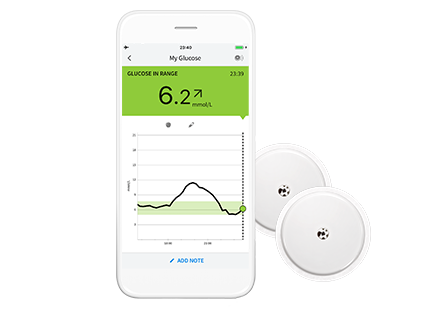
However, the condition of pregnancy also profoundly affects glycemic control and the management of diabetes-with increased glucose variability early in the pregnancy progressively increasing insulin resistance, requiring intensification of therapy to maintain glucose targets and increased risk of hypoglycemia (particularly during the first half of the pregnancy 7, 8), with more rapid onset of insulin-induced hypoglycemia. 6 Consequently, the glucose targets during pregnancy are more stringent than at other times and may predispose women to hypoglycemia. 4, 5 Effective glucose monitoring and therapy adjustments are recommended to protect against diabetes related pregnancy complications. 1–3 The risks increase proportionately with worsening glycemic control. T he increased risks to both mother and developing fetus imposed on pregnancies complicated by diabetes are well established. Accuracy of the system was unaffected by patient characteristics, indicating that the system is safe and accurate to use by pregnant women with diabetes. There were no unanticipated device-related adverse events.Ĭonclusions: Good agreement was demonstrated between the FreeStyle Libre System and SMBG. User questionnaires indicated high levels of satisfaction with sensor wear, system use, and comparison to SMBG.

Sensor accuracy was unaffected by the type of diabetes, the stage of pregnancy, whether insulin was used, age or body mass index. Overall mean absolute relative difference was 11.8%.

Results: Clinical accuracy of sensor results versus SMBG results was demonstrated, with 88.1% and 99.8% of results within Zone A and Zones A and B of the Consensus Error Grid, respectively. Sensor glucose values (masked) were compared with capillary SMBG values (made at least 4 times/day).

Average gestation was 26.6 ± 6.8 weeks (mean ± standard deviation), age was 30.5 ± 5.1 years, diabetes duration was 13.1 ± 7.3 years for T1D and 3.2 ± 2.5 years for T2D, and 49/74 (66.2%) used insulin to manage their diabetes. Materials and Methods: Seventy-four participants, with type 1 (T1D, n = 24), type 2 (T2D, n = 11), or gestational ( n = 39) diabetes, were enrolled across 13 sites (9 in United Kingdom, 4 in Austria). The aim of this study was to determine accuracy (compared to self-monitoring of blood glucose ), clinical safety, and acceptability of the FreeStyle Libre System when used at home by this population. Background: Accuracy of the FreeStyle Libre™ Flash Glucose Monitoring System has not been evaluated in pregnant women with diabetes.


 0 kommentar(er)
0 kommentar(er)
